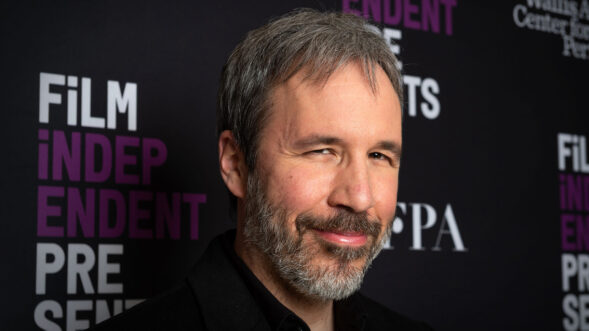
By Adity Choudhury
Isn’t it difficult to imagine a world without stories? Be it around fireplaces inside warm hearths or in intimate gatherings, people have regaled each other with stories. Apart from the act of listening, it shows a deeper desire to catalogue our world.
August 22, 1846, changed the world in more ways than one. British antiquarian, William J. Thoms penned a letter to the legendary literary journal, Athenaeum, which was published in London from the 19th to 20th centuries. In this letter, he combined two words, ‘folk’ and ‘lore’, thus, coining the term, ‘folklore’.
This day is observed (and celebrated) as “World Folklore Day every year.
To commemorate this day, the Department of Cultural & Creative Studies (CCS), NEHU, organised an event within the campus recently. Titled, “Once Upon a Time: Folklore Through the Ages”, it was a day filled with talks, different activities and cultural programmes, in collaboration with Ever Living Museum, and partnering with the Indian Council of Social Science Research-North-Eastern Regional Centre.

Invited speakers – Nathaniel Majaw (Assistant Professor, St. Anthony’s College), Sharailyn War Sohlang (Assistant Professor, Kiang Nangbah Government College), Desmond Kharmawphlang (Professor, CCS, NEHU), Kyntiewbor War (Curator, Ever living Museum), and Mark Bender (Professor, Chinese Literature & Folklore, Ohio State University) – touched upon different aspects of folklore.
A sense of calm permeated the walls of the convention hall. Young students waited patiently for the programme to start. Indigenous products of the three main tribes of Meghalaya adorned the walls. Soft music, coupled with the sunny day, lifted the mood instantly. A tea, food and book stall added a quiet charm… any fatigue one felt disappeared as the day progressed.
The day began with Abhirup Sarkar playing a traditional ‘phawar’ on his flute. His acting in the cultural programme later in the evening gave a glimpse into this multi-talented personality. He is pursuing his second Master’s degree in CCS.
Speaking in his quiet yet reassuring voice, Kharmawphlang welcomed those who assembled in the hall. Sharing details about World Folklore Day, the academician and folklorist said, “August 22 is of particular importance for folklorists’ world over. It is auspicious for the discipline of folklore as William J. Thoms wrote a letter to the Editor of Athenaeum where he wrote about the necessity of having a full-fledged discipline of folklore in order to study, investigate and analyse the folklore phenomena. He is regarded as the ‘Father of Folklore’.”
Listening to him, one was reminded of a particular quote by J.R.R. Tolkien – “Pay heed to the tales of old wives. It may well be that they alone keep in memory what it was once needful for the wise to know.”
Or, perhaps, British novelist Dianne Wynne Jones, who said, “If you take myth and folklore, and these things that speak in symbols, they can be interpreted in so many ways that although the actual image is clear enough, the interpretation is infinitely blurred, a sort of enormous rainbow of every possible colour you could imagine.”
He invited everyone to look at the indigenous products… a display of artifacts of material culture, curated by Kyntiewbor War over a long period of time.
“There will be indigenous games, both indoor and outdoor, that will, perhaps, trigger a sense of nostalgia. For those who are not aware of them, this will be a novel discovery. You can check the display and even participate in them,” he added.
The first half of the programme focused on different academic aspects of folklore.
Speaking about folklore, Sohlang said, “I believe that it is actually befitting to celebrate folklore day any time since folklore emanates from a period of timelessness, which continues to exist and perpetuate endlessly as the theme itself suggests.”
Adding a layer of depth, she spoke about children in folklore, with reference to Khasi games. Recently, she conducted a study as part of her PhD research, with reference to Khasi indigenous game rhymes that fall under the broad purview of folklore.
Her passion evident in her words, “Children’s folklore is an important genre of oral literature. It exists in almost every culture and remains a universal phenomenon, prevalent throughout generations. A variety of elements or features give them their distinctive character. Interestingly, there is no known author in most cases, yet children share a rich lore of stories, traditions and customs unique to childhood, in the form of games, songs and rhymes that is astounding to observe. They are passed on through word of mouth from generation to generation, representing an essential element of verbal art and expression, narrated, recited, performed and transmitted verbally by children in different formal and informal settings, both private and public spaces.”
She further highlighted the nature of these game rhymes, taking audience back to their childhood memories. “There are different kinds of rhymes. Some are accompanied by songs and involve gestures, manifesting children’s creative abilities.
Majaw, on the other hand, focused on archiving stories and the process of digitising indigenous knowledge systems. As one of the founding members of the Northeast India AV Archive, his talk reflected upon the urgency of recording stories, bringing to mind what American Young Adult fiction author, Rebecca Yarros once said, “Remember that folklore is passed from one generation to the next to teach us about our past. If we lose it, we lose the links to our past. It only takes one desperate generation to change history – even erase it.”
His approach blended technology to show old images and footage of archived materials. He spoke of Hamlet Bareh’s film on the Anglo-Khasi War. One particular shot revolved around the alliance of Khasi Syiemships. Referring to this clip where the actors greeted each other using a particular gesture, he posed a question, “Is it the filmmaker imagining how the Syiems may have greeted each other? Or is this an aspect of our culture that has long vanished, which Bah Hamlet may have heard about and incorporated in his film Ka Synjuk Ri Ki Laiphew Syiem (The Alliance of Thirty Kings)?”
He spoke of a VHS cassette with a label, “Mawphlang”. Upon recovering parts of the video, the Archive discovered it was a documentary shot in the 1990s, based on the sacred forests of Meghalaya. It included a dance, accompanied by the beating of the drums… something that has not been performed in the past five or six years.
Another video was taken by Jeff Basan, the headman of Mission Compound and a celebrated wedding videographer back in the day. Basan submitted his video of the sowing season to Northeast India AV Archive. Majaw realised the value of this documentary. The short clip, probably dating back to the 90s, showcases farmers tilling the ground while singing to the drumbeat, moving in rhythmic circles. Beautifully so, it is now preserved for posterity. To the average viewer, it offers a rare insight into community tilling in Ri Bhoi district of Meghalaya.
War spoke about his journey as a curator of Ever living Museum. Working as an engineer meant travelling across the length and breadth of the state. Known for possessing a keen eye for detail, he narrated how the museum came to be.
As he shared his experience, the audience smiled, taking in the enormity of his work… he is a one-man army who has dedicated his life to culture preservation. He called upon the people of Meghalaya to take the responsibility of archiving that which is on the brink of disappearance. “Let us work together now so that the future generations know the value of our culture. Every cultural aspect is part of our Khasi identity and who we are, living in this part of the world.”
Apart from the sumptuous and organically made Khasi indigenous cuisine for lunch and the traditional Khasi games that appealed to the young and old alike, dances, songs and skits took centre stage in the second half of the programme.
Mention must be made of the NEHU Drama Association (a cheeky nod to the other NDA), a beautiful skit brought on stage, a historian, an anthropologist, a philosopher, a folklorist, and a Physicist, including a time machine, as they satirised the insatiable ego battle to prove one discipline’s superiority over the other… in a bid “to understand the past”. Drawing cheers from the crowd, it asked the audience to ponder without sounding preachy.
As the day came to a close, the importance of folklore dawned on the audience… like dusk softly tiptoeing on rain-drenched grass. To be human is to listen to stories intently, with a mission to remember the value they hold. Who are we, after all, if not storytellers?






